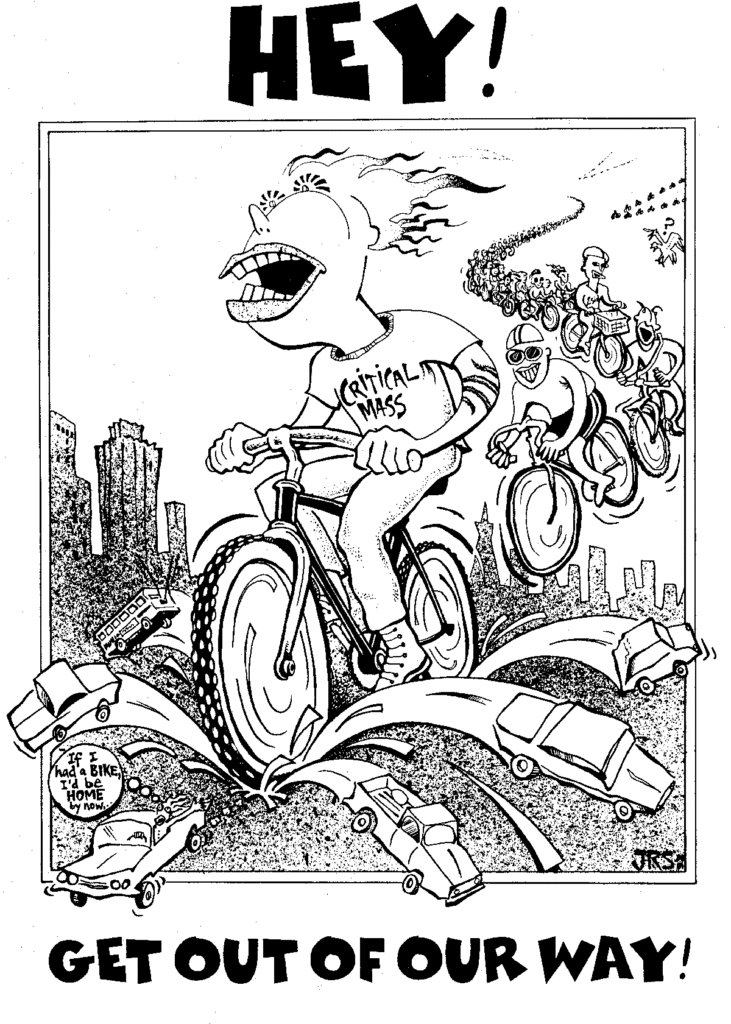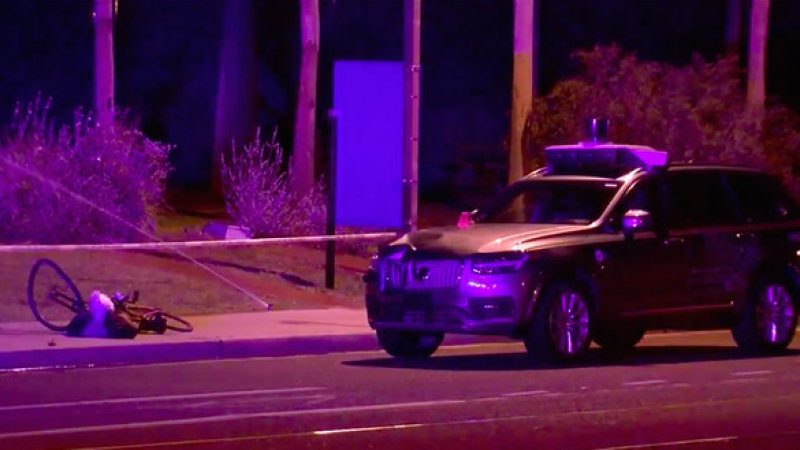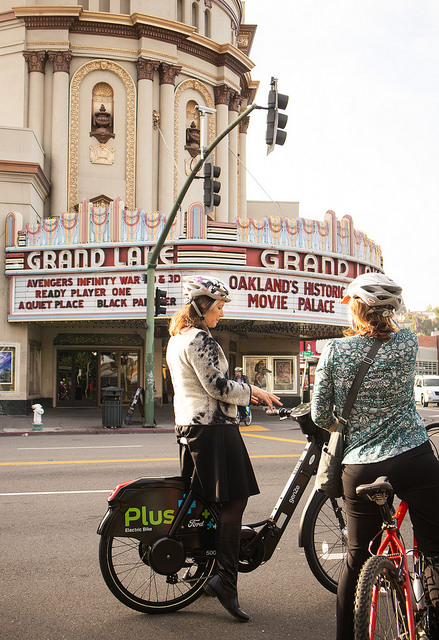The exchange I had with Dianne Y. a while back about the Oakland Rideout got me thinking about how cycling and skateboarding cultures are different. Dianne had suggested:
you can study how these rides (of BMX origins / community) are “claiming the right to the city” and public space, and compare to the skateboarding community doing the same. how come there is support for rideouts from advocacy groups but no public recognition for skaters?
— Dianne Y. (@dt8k) September 15, 2019
I don’t know so much about skating culture, but one impression I have is that it has never embraced hierarchy in the same way bike advocacy has, either in terms of administrative structure or advocacy goals. Skaters, I would estimate, seem to want to retain some of the subversive, outsider status that characterized the sport’s golden age. They’re not interested in asserting their dominance over everyone else in urban space. They’re more interested in creative re-use of urban space; in that way, a lot more like the Rideout than traditional bike advocacy.
Cartooning hierarchy
Thoughts about hierarchy kept following me around. Visiting the “Cycling in the City” exhibit at the Museum of the City of New York, I saw this 1896 cover from the political satire magazine Puck.
Of course this cartoon immediately reminded me of my favorite Critical Mass poster:
I don’t know if Jim Swanson, the poster artist, was aware of the magazine cover, but it is interesting to think about how the two images are making opposite points. Swanson is portraying a group of cyclists joyfully scattering other road users out of their way, while Puck appears to be commenting that the cyclists of 1896 showed no concern for other road users. Both cartoons demonstrate that addressing the hierarchy of the road is an enduring theme in cycling discourse.
Dominating infrastructure
Then, I saw this tweet from the Dutch Cycling Embassy (a primary source for videos of white Northern Europeans riding through Amsterdam on bike paths, the sorts that traditional U.S. bike advocates love to share):
Streets can generally be divided into 3 categories:
?Ones that DARE you to cycle
?Ones that ABLE you to cycle
?Ones that INVITE you to cycleUnless cities are striving for the latter, cycling will exclusively remain for the fit and brave.
Graphic via https://t.co/Y0W0Ty5RlF pic.twitter.com/10HAZJi8fA
— Dutch Cycling Embassy (@Cycling_Embassy) November 23, 2019
The interesting thing about this graphic is that it explicitly valorizes hierarchy. The infrastructure taxonomy is “Equal or dominating/Present but dominated/Hardly any.” Dominating infrastructure will be ridden by up to 40% of the population, Dominated infrastructure by up to 20%. Cycling in places with Hardly any infrastructure is maxed at 4%, only 18-28 year old individuals, the graphic asserts.
There is little empirical support for those assertions. Many of the cities I’ve cycled through in Italy, for example, have virtually no bicycle-dominant infrastructure, and little dedicated infrastructure at all, but have high cycling rates: Ravenna, for example, claims 17% mode share, and it’s common to see nonni riding there and in other Italian cities. I studied in Berlin which claims 15% mode share, and the cycling infrastructure there is…certainly not dominating. (Mostly, bikes ride on the sidewalk). There is sparse data available about cycling rates in the global South, but, for example, Raipur, India claims 28% mode share, and many other Indian cities are above 10%. The Dutch Cycling Embassy, and much of U.S. bike advocacy, seems to willfully ignore the fact that cycling is common in many places outside of Northern Europe, and generally is not done on Dutch-style infrastructure in other places.
Colonialism is not merely the physical domination of lands and people; it is also the cultural subjugation of different ways of thinking and being. A brief review of Dutch colonial history should make one extremely cautious about the top-down imposition of Dutch ideas on other places and cultures.
An opposing view of spatial hierarchy
A new piece fell into place for me reading Peter Flax’s recent interview with John Forester. Forester is the founder and key proponent of the vehicular cycling movement, which has fought against bike infrastructure since the 1970s. He is also one of the most patriarchal and unpleasant people you’ll ever interact with, and his history of combativeness is probably part of what has led to U.S. bike advocacy being so resistant to accepting criticism from fellow cyclists.
In reading this piece I was struck by the thinking behind Forester’s objection to bike facilities. He is not objecting to bike advocacy’s attack on the hierarchy of the street; he is objecting to its willingness to accept what he views as separate-but-equal status. He says, “A person who advocates cycling paths is doing exactly what motorists want.” To Forester, the bike facility is lower in the spatial hierarchy of the road. It represents a capitulation to the driver’s demand to dominate the road; he calls it the “bicycle inferiority complex.”
Forester wants to be at the top of the social/spatial hierarchy, and he thinks the way to do that is to simply claim the space, by riding in the middle of the lane and emulating the movements of cars in traffic, rather than being “pushed out of the way” onto bike facilities, which in his view are inferior.
Flax attempts to engage Forester on the idea that less-confident cyclists may be unwilling or unable to ride on busy roads, noting that he (Flax) can ride at speed in traffic, but “95% of the people who ride a bike in Los Angeles aren’t going to do it.” Forester’s response is to reject the question, and center his own experience as a strong, white male cyclist. “I [don’t] give a damn what ignorant motorist superiority people feel about me. I ride the way I should. And to hell with them.” The only thing we need to do, he says, is to fight the idea that cyclists are inferior, because it is only that phobia which is stopping people from riding on busy roads.
I do not intend to wade into the whole vehicular cycling debate (please God, no), but want to point out that Flax and Forester actually share a common mindset. They both believe that reason American cycling rates are low is that bikes are too low in the hierarchy, and they both believe cyclists are entitled to be at the top. They just disagree on the way to get there. On the one hand, vehicular cycling thinks we should be using existing roads as if we were cars. On the other, traditional bike advocacy thinks we should be building Northern European-style infrastructure (curbside protected bike lanes), which are maximally expensive and maximally disruptive to other road users.
Who is left out of this discussion is Lugo’s “survival cyclists”; the Latino workers getting around the city using poorly-maintained department store bikes. They do not value dedicated bike infrastructure and may not use it even where it exists. And they certainly will not be adopting vehicular cycling practices. What do we know about how they exist in urban space? What are their values and needs around transportation? Who is bringing them to the table?
Like so much of what the city does, the argument becomes two groups at the top shouting at each other, while those at the bottom remain marginalized.




